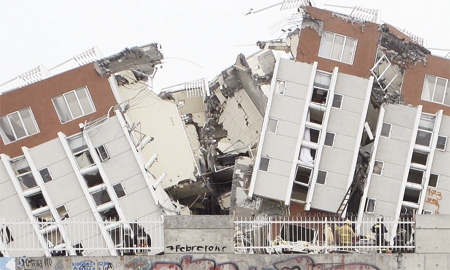Until recently, Chile rarely made the headlines. While popular with backpackers and wine buffs, the country certainly didn’t rank among the world’s more well known locations.
This all changed in October 2010 when 33 miners, trapped underground for 69 days, were rescued in one of the most dramatic events in recent history. Prior to the rescue mission, dubbed Operation San Lorenzo, a video camera was sent down a borehole, giving the men the chance to record their experiences and send messages. People worldwide could watch the miners’ agonizingly slow wait, and although each day that went by brought new hope for their survival, it also brought renewed desperation and unease about the likelihood of a successful rescue.
However, between October 12th and 13th an estimated 1 billion people around the world watched as the miners, one-by-one, stepped into the narrow capsule that had been lowered 2,300 feet into the mine, and were hoisted up to the surface where newly elected President Piñera awaited along with the Minister of Mines and hundreds of journalists, onlookers, family members and friends. Thirty-nine trips later, the miners and their rescuers were back on the ground.
The rescue mission was the fruit of cooperation across nearly all government ministries, coupled with the use of the most advanced technology. NASA and over a dozen multi-national corporations offered their expertise to help carry out one of the most complicated rescue operations in history.
Chile had made news when earlier in the year an 8.8 magnitude earthquake struck off the coast on February 27 and then President Bachelet was forced to declare a state of emergency.
The sixth largest earthquake ever recorded rocked South America, triggering tremors as far as Argentina and Peru, and a tsunami that leveled several coastal towns.
About 80% of the population endured the powerful impact. Santiago was thrown into chaos and the blackout that followed affected 93% of the country’s population. An estimated 500 people lost their lives, and thousands more were injured. Losses from the disaster reached an estimated US$30 billion – the equivalent of 18% of GDP.
However, the Chileans showed tremendous resilience. Within 24 hours of the quake, Santiago’s subway network was functional. Also, 80,000 emergency homes were quickly built to house the homeless. Within a year, 70% of school buildings had been rebuilt, 100% of hospital beds restored, and drinking water supplies, roads, ports and airports were all back to normal.
Though the recovery effort is far from over, Chile’s steely determination to get back on its feet seems to be paying off: the economy is predicted to buck global economic trends and expand by a remarkable 6.2% in 2011.
0 COMMENTS